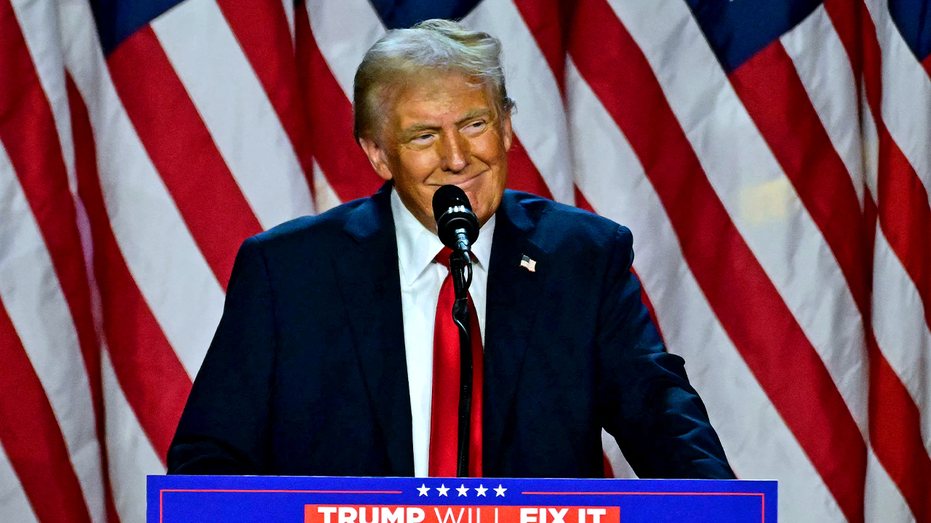In an intently watched and widely broadcast address, former President Donald Trump pledged to steer the United States into a “golden age” should he reclaim the presidency in the coming election cycle. Speaking to a fervent assembly of supporters, Trump presented his vision for revitalizing the nation, committing to “fix everything” and restore what he sees as the lost grandeur of America.
During his speech, Trump underscored themes of economic resurgence, national security, and governmental reform. Echoing a recurring motif from his previous campaigns, he vowed to prioritize American interests, framing his approach as a bold return to foundational values. Trump passionately argued that under his renewed leadership, the United States would experience unprecedented growth and stability.
Throughout the address, Trump highlighted a number of pressing issues he plans to tackle. He spoke emphatically on the economy, discussing strategies to enhance job creation and boost industries that he claims have been left behind. Promises of tax cuts, deregulation, and incentives for businesses to bring manufacturing back to American shores were central to his economic agenda.
On the topic of national security, the former president articulated a robust strategy aimed at fortifying the nation’s borders and military expansion. Trump reiterated his commitment to enforcing border security measures, including the continuation of building a physical barrier along the southern border. He assured supporters that these actions would serve to reduce illegal immigration and enhance the safety of American citizens.
Trump also addressed issues of foreign policy, emphasizing a need for the United States to regain what he described as “lost respect” on the global stage. In his view, the past few years have seen a weakening of America’s standing among allies and adversaries alike. He vowed to negotiate “from a position of strength” and prioritize deals that serve American interests.
Turning his attention to domestic policy, Trump discussed plans for overhauling the healthcare system, expressing his desire for an approach that would ostensibly provide Americans with more affordable and accessible options. He criticized what he sees as the failings of the current system and promised to dismantle any obstructions to quality healthcare.
Furthermore, Trump didn’t shy away from discussing education reform, advocating for more school choice and greater parental involvement in education decisions. He argued that giving parents more control over their children’s education would lead to better outcomes and a more skilled workforce.
In a bid to garner support from various demographics, Trump also addressed concerns about law enforcement and community safety. He praised police forces and proposed increasing funding to ensure they have the resources necessary to protect communities. This stance is likely to resonate with segments of the population concerned about rising crime rates and the adequacy of local law enforcement.
Critics, however, have been quick to question the feasibility of Trump’s proposals. Detractors argue that many of his plans lack substantive detail and consider his promises to be grandiose rhetoric rather than actionable blueprints. Political analysts suggest that while his base remains largely supportive, his ability to reach undecided voters largely hinges on elaborating specific policies and providing detailed plans for implementation.
Trump’s speech is part of a broader campaign narrative that seeks to paint the current administration as having steered the country in the wrong direction. By presenting himself as a solution-focused candidate who can reverse perceived declines, he aims to reestablish himself as a formidable force on the national stage.
Responses from political figures across the spectrum have been swift and varied. Some Republican officials have welcomed his renewed candidacy, viewing it as a pivotal opportunity to unseat the current administration. Other GOP members, however, remain cautious, recognizing potential divisions within the party and the risks associated with a potentially contentious primary process.
On the Democratic side, there is concern about the implications of Trump’s return to the political arena. Some strategists warn that underestimating his appeal could be a critical error, advocating a proactive approach to counter his campaign narratives effectively.
As Trump continues to rally his supporters and articulate his vision, the unfolding electoral season promises to be highly charged and closely contested. With stakes perceived to be high by all participating factions, the discourse surrounding the next steps for America appears set to dominate the national conversation in the months ahead.
The journey toward the next presidential election is just beginning, and Trump’s ambitious blueprint is likely to be a central element of political discussion. As the process unfolds, the American public will undoubtedly scrutinize the feasibility and desirability of his promises, balancing them against their personal experiences and aspirations for the country’s future.
Ultimately, Trump’s bold assertions of ushering in a “golden age” signal his intent to captivate voters’ imaginations while challenging his opponents to match his vision with counter-proposals. The success of this strategy will depend on his ability to effectively communicate his agenda and convince a diverse electorate of its merits.































